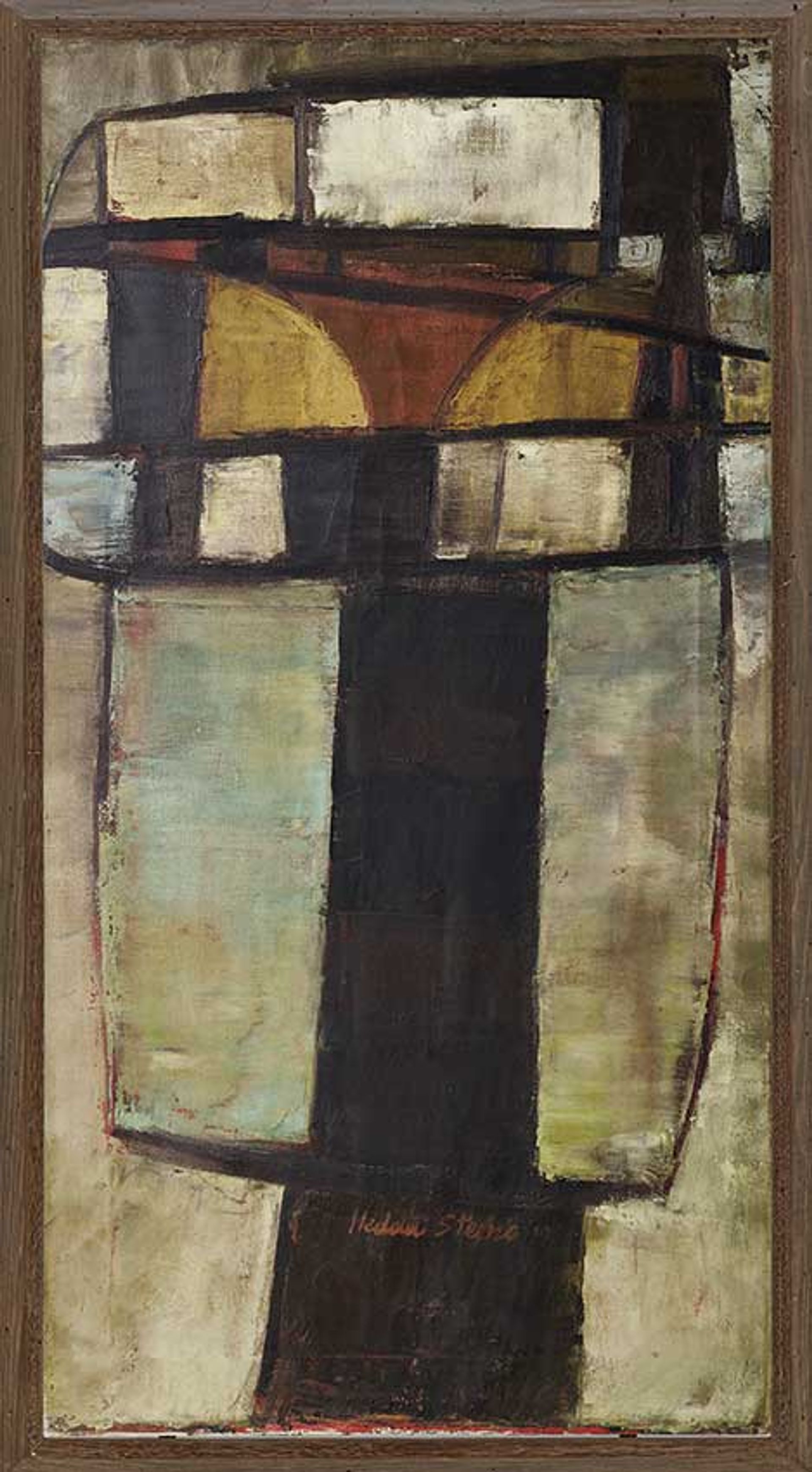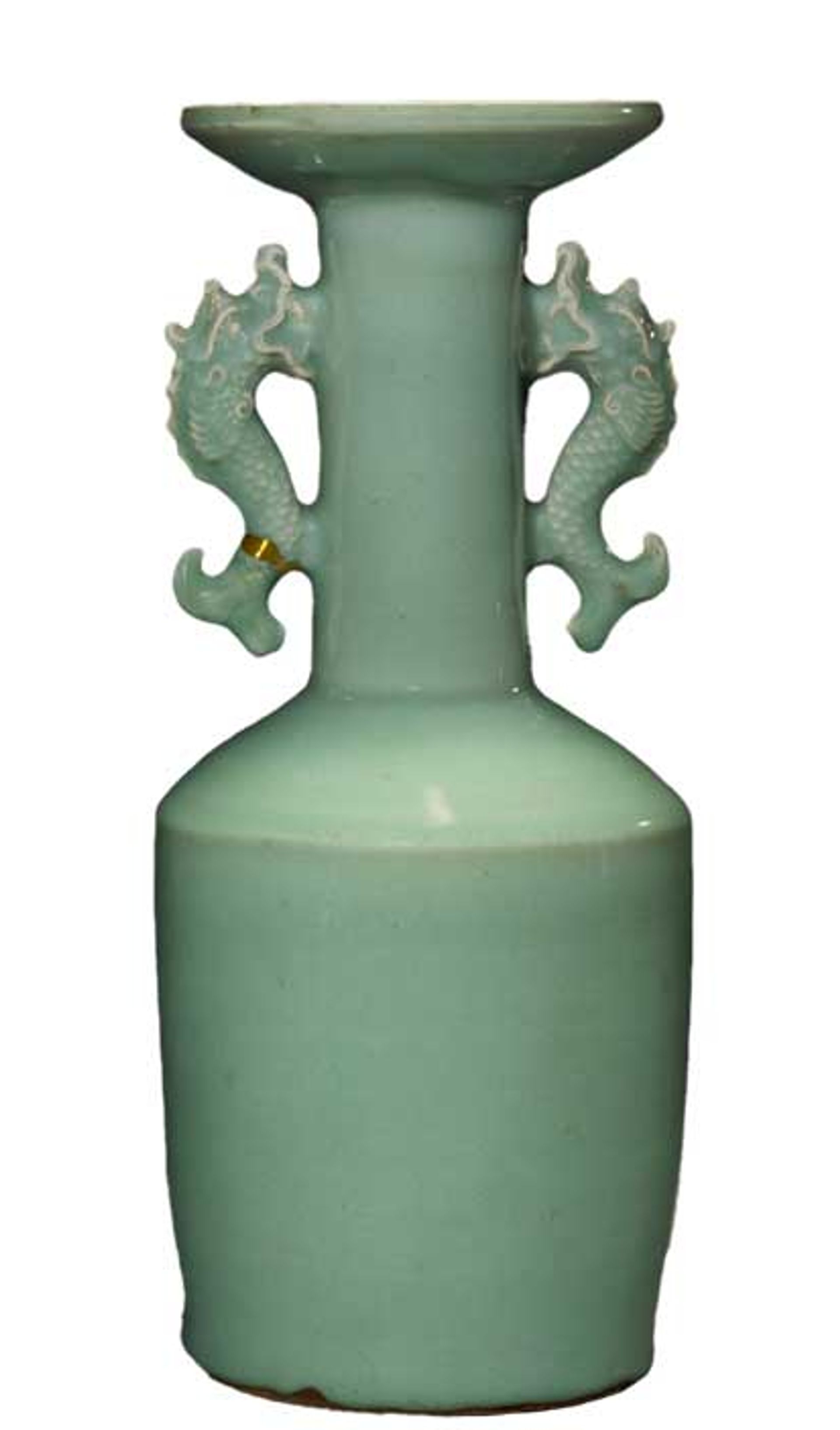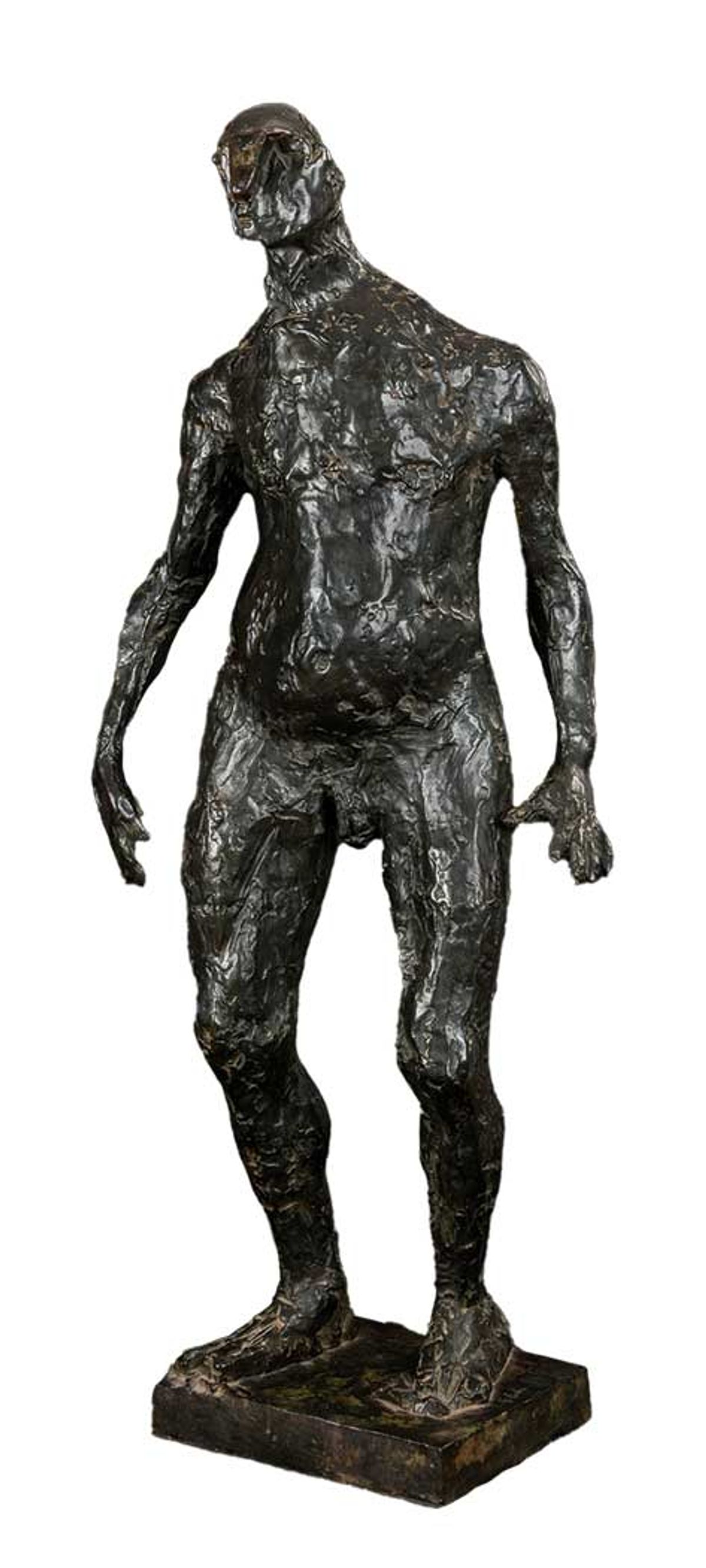Germaine Richier, L’Homme qui Marche (1945/61)
Collection of Gérard Depardieu, Hôtel Drouot, Paris, 26-27 September
Estimate: €500,000-€800,000
According to the Drouot specialist David Nordmann, this “ogre-ish” bronze sculpture by Germaine Richier bears a slight resemblance to its consignor, the prolific French actor Gérard Depardieu. Around 250 works, estimated at a total of €3m to €5m, from the two-time César Award winner are coming to the block this month. The Richier sculpture partly takes its cues from the work of Auguste Rodin, who Depardieu portrayed in the 1988 film Camille Claudel; a Rodin sculpture (est. €1.5m-€2m) has also been consigned to this sale. Depardieu bought the Richier in 1970. According to Drouot’s catalogue notes, its rough surfaces reflect violence and trauma and are “a sure sign of the [crisis] that followed the traumatic events of the Second World War”. The original sculpture from which the present lot was cast was made in 1945, while Richier was in exile in Switzerland. It is likely an antecedent to the 1948 work L’Orage, which was once exhibited at the Fondation Maeght in southeast France. Nordmann does not give a specific reason for Depardieu selling so much of his collection but says that “he is 74 years old and, as he says, he’s had several heart operations, several motorbike accidents. He’s lived an enormously full life and needs to lighten the load a little”. In an interview with Le Monde, a Drouot spokesperson declined to say whether the sale is linked to active legal investigations into a number of cases of alleged rape and sexual violence by Depardieu that came to light in April. “We would prefer there weren’t these judicial problems,” Nordmann said. “In theory, the art market is sufficiently independent from these concerns ... but we have no idea.”

Courtesy Christie’s
Hedda Sterne, Untitled (1946)
Latin American Art, Christie’s, New York, 17 September
Estimate: $80,000-$100,000
Hedda Sterne (1910-2011) was one of the few women to make her mark in the boys’ club that was New York’s Abstract Expressionism movement (an infamous Life magazine cover from 1951 profiling the movement’s luminaries shows her as the only female figure standing among 14 men such as Jackson Pollock and Willem de Kooning). A market correction for Sterne’s work has been observed over the past five years, cemented by Victoria Miro taking over the estate in 2022. Prices are rising steadily: last year a 1982 canvas estimated at $10,000 to $15,000 sold for almost 20 times that amount, making $275,000. Sterne’s auction record stands at $504,000 for a 1955 oil and spray paint on canvas, sold by Sotheby’s New York in May 2022. Christie’s now plans to offer a work from Sterne’s 1940s period—only six works from this decade have appeared at auction. It was executed in 1946, the same year the New York dealer Betty Parsons, an early champion of the Abstract Expressionists, opened her gallery. Untitled bears “richly layered geometries and an earthy palette evoking art-historical antecedents such as Picasso’s Cubism and acts as a bridge to mid-century triumphs in Abstract Expressionism”, says the Christie’s specialist Julian Ehrlich. This work was acquired directly from the artist around the time it was painted and has been held in the same private collection for more than 60 years.

Courtesy Christie’s
Longquan Celadon Kinuta Vase, Southern Song Dynasty (12th century)
Mineo Hata: An Instinctive Eye, Christie’s, New York, 21 September
Estimate: $1m-$2m
A tranche of Chinese works of art from the Japanese antiquities dealer Mineo Hata is expected to fetch around $5.5m. The collection coming to auction is made up of 24 lots of archaic bronzes and ceramics, including this kinuta (mallet) vase dating from the Southern Song Dynasty (1127-1279). While most kinuta vases have handles in the shape of bird wings, a select few, like this one, have handles in the shape of dragon fish. A similar mallet-shaped vase with a wide flattened mouth was excavated in 1987 at the kiln site of Qingliang Temple in Henan province, while the National Palace Museum in Taipei has two similar vases with damaged mouths. Christie’s catalogue entry notes that the vase’s shape, despite resembling a paper mallet, may in fact have been introduced to China as a glass vessel from the Islamic west, possibly Iran.


